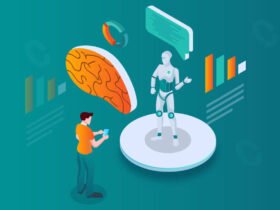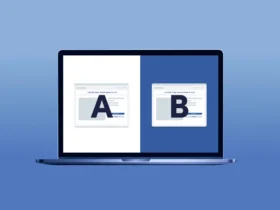Task management is very important in the contemporary world due to the increased rate in which tasks are being undertaken. Other conventional techniques such as use of written papers, particularly checklists, are usually wanting. Digital tools are a more relevant approach, improving the rate and becoming more structured with options like live tracking, notifications and other applications. Organizational tools also facilitate the management of tasks in order to ensure their proper and efficient execution.
The features of these digital task management tools include the following:
Real-Time Updates and Notifications
Instant Synchronization Across Devices: Digital Task management tool guarantee that any modifications made to either the particular list or projects affect all the devices. This ensures the users are updated irrespective of what device they are using be it a smartphone, a tablet or a computer.
Automatic Reminders and Alerts: These tools can also have features that can alert a user of impending due dates, meetings or other things that might require attention. The alerting option is also configurable thus enabling users to receive updates through email, push notification, or even text.
Integration with Other Applications
Compatibility with Calendars and Email: There are numerous digital task management applications that are compatible with the calendar and email applications like Google calendar, Outlook, etc where users can send their tasks straight from their inbox and also view their tasks in their calendar.
Seamless Workflow Integration: Some important features include the integration with other software which are widely used in workplaces including communication and project management platforms (for instance, slack or Jira) and file sharing services (for instance, Google Drive or Dropbox).
Customizability and Flexibility
Personalized Task Views and Layouts: The tasks can be viewed in the form of lists, boards, calendars, as well as timelines, depending on what the user prefers. This makes it easy for people to schedule their to-do list in a manner that is suitable with the individual or the team at hand.
Adaptable to Different Types of Tasks and Projects: There are many types of tasks that can be easily solved with the help of digital tools, starting with the list of actions to be done and up to the project schedule. These tools can be used to create sub-tasks, attach files, set priorities, and assign tasks to certain individuals and therefore are useful in various ways.
Enhanced Collaboration Features
Shared Task Lists and Calendars: The task lists and calendars can be shared to enable the functioning of the teams in a coordinated manner. This feature is helpful in ensuring that all the stakeholders of a project are informed of the tasks that are expected of them and the timelines within which they are supposed to complete the tasks, hence enhancing co-ordination.
Real-Time Collaboration and Updates: It is possible to work with several users on the project and all the changes will be done immediately. This is especially useful for groups or projects that are located in different areas or require constant exchange of information.
Advanced Analytics and Reporting
Progress Tracking: The work in progress and the accomplishment of tasks and projects can be tracked and measured using metrics and representations such as Gantt charts, progress bars, and completion percentages.
Productivity Insights: Some of the tools have features that enable the users to monitor the trends in productivity and potential problem areas.
Security and Accessibility
Data Security and Privacy: The modern digital task management tools have some features such as encryption, two-factor authentication, and data backup to protect the users’ information.
Accessibility Features: These tools are supposed to be available on different devices and operating systems to help users complete their tasks even if they are not connected to the Internet. Some of the tools also have other options for the disabled persons so that they can also be able to use the tools without any strain.
The advantages of employing digital task management tools
Enhanced Productivity
Real-Time Updates: This will help the users to always have an update of their tasks on all the devices they use and this will help them avoid working on outdated information.
Automation of Repetitive Tasks: Recurrent activities and reminders can be easily handled by the digital tools and hence time can be devoted to other more important matters.
Improved Organization
Centralized Task Lists: All the tasks can be accessed from one place, which eliminates the problem of having different lists and tools.
Categorization and Prioritization: This makes it possible to sequence the activities and to establish which of the activities is more critical and which one is less critical so that no activity is neglected.
Better Collaboration
Shared Task Lists and Calendars: It allows the teams to see and update the tasks and timelines and make sure that everyone is aware of the progress.
Real-Time Collaboration and Updates: Everyone can work on the same things at the same time, and the changes made are visible to all the other members of the team, which is good for collaboration.
Increased Flexibility
Customizable Interfaces: It allows the users to arrange their interfaces in a manner that they wish, which makes the tool more effective and easier to use.
Adaptable to Various Task Types: These tools range from simple list making to project management tools and can be used in various situations.
Efficient Time Management
Automatic Reminders and Alerts: Notifications and reminders are helpful in avoiding the failure to meet deadlines or forgetting certain tasks.
Time Tracking Features: Some of the tools are time tracking to help the users track the time taken to complete a certain task so that time can be managed and analysed for employee productivity. Integration with Other Applications
Seamless Workflow Integration: Digital task management tools can be integrated with other commonly used applications like e-mail, calendar, and project management tools, thus reducing the need to switch between different applications.
Task Management Tool:
Time Champ is a task-oriented time management software that can assist you in organizing your work in the most effective manner. Some of the features include task tracking, task reports, manual time logging, screen recordings, and customization which makes it easy to track tasks, generate reports, log time, capture screens and customize the system to meet the needs of the project. It is a very useful tool for tracking the time spent by the employees and for the efficient management of the tasks.
Conclusion:
The use of digital task management tools is essential in the current society because it enhances productivity, order, and collaboration. These tools help people and groups to manage their work more efficiently through features like real-time update, integration with other applications, and interfaces that can be customized according to the user’s preference. Applying best practices means that users can easily use these tools to improve their productivity, and therefore increase success in various activities in their daily lives.














Leave a Reply